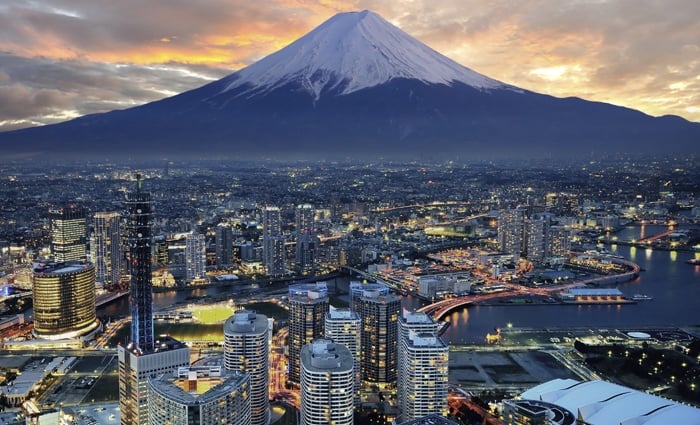Morningstar: Japan’s Integrated Casino Resort Market Should Be Less Restricted
Posted on: September 23, 2017, 02:00h.
Last updated on: September 24, 2017, 02:03h.
Japan’s forthcoming integrated casino market won’t be able to achieve its maximum revenue potential should the federal government implement various restrictions as expected.

That’s according to global investment firm Morningstar, which voiced various concerns over the regulations in a note issued this week.
Equity analysts Chelsey Tam and Dan Wasiolek point to a likely 15,000-square-meter (161,458 square feet) cap on casino floor size, as well as a potential limit on the number of times a Japanese citizen can enter the gambling venues, as the predominant policies that will curb revenue.
“We think recent recommendations proposed by Japan’s government-appointed integrated resort panel could restrict gaming demand on the island nation, if stringently enacted, leading to reduced capital expenditure and lower tourism (one of Japan’s main goals is increasing tourism),” the Morningstar analysts stated.
Main Problem: Problem Gambling
Regulating gaming floors to 161,500 square feet would make the Japanese integrated casino spaces much smaller than those found in Macau. For example, The Venetian Macau is 546,000 square feet.
But while Japanese lawmakers in President Shinzo Abe’s ruling Liberal Democratic Party want to increase tourism through the IR properties, they want to do everything in their power to make sure they also don’t increase problem gambling rates.
Many Japanese residents frequent pachinko halls, a game that’s played for ultra-low stakes. The machines resemble inverted pinball games. Nearly every other form of gambling is presently outlawed. That, of course, will change with the integrated casino bill.
A 2014 study from the Ministry of Health, Labor and Welfare found that 5.36 million Japanese, or nearly five percent of the adult population, are at risk of becoming a problem gambler.
With the public largely opposed to commercial gambling, a 2016 national poll finding just 12 percent of citizens in support of legalizing casinos, politicians are trying to have it both ways.
Probable Outcome
The Japan legislature, known as the National Diet, will unveil the final terms of its gambling bill in December. The body has released few details on what it might entail, but plenty of rumors have surfaced.
Here’s the general consensus:
The locations of the two casino resorts are expected to be in Tokyo, and the other in either Osaka or Yokohama. Mass market gaming will be taxed at 22 percent, and VIP play at 12 percent. Japanese citizens will be restricted to a number of annual visits, and will pay an entrance fee that could be as much as $100.
Las Vegas Sands and MGM Resorts are the leading candidates for the coveted licenses, and will likely construct complexes that will cost in the neighborhood of $4-5 billion. That’s according to Sands’ billionaire founder and CEO Sheldon Adelson. Companies had earlier pledged investments as high as $10 billion, but have reduced those numbers as potential strict regulations surface.
Japan is basing its casino industry off Singapore, “given its success in controlling gambling addiction while aiding economic growth,” Tam and Wasiolek explained. But the analysts feel the bigger populations in Tokyo, Osaka, and Yokohama warrant much larger casino floors than in the less-populated Singapore.
“The population within a 41-mile radius of Tokyo and Yokohama is 4.7 times larger than Singapore. The density in these cities could require more tables to satisfy demand,” they concluded.
No comments yet